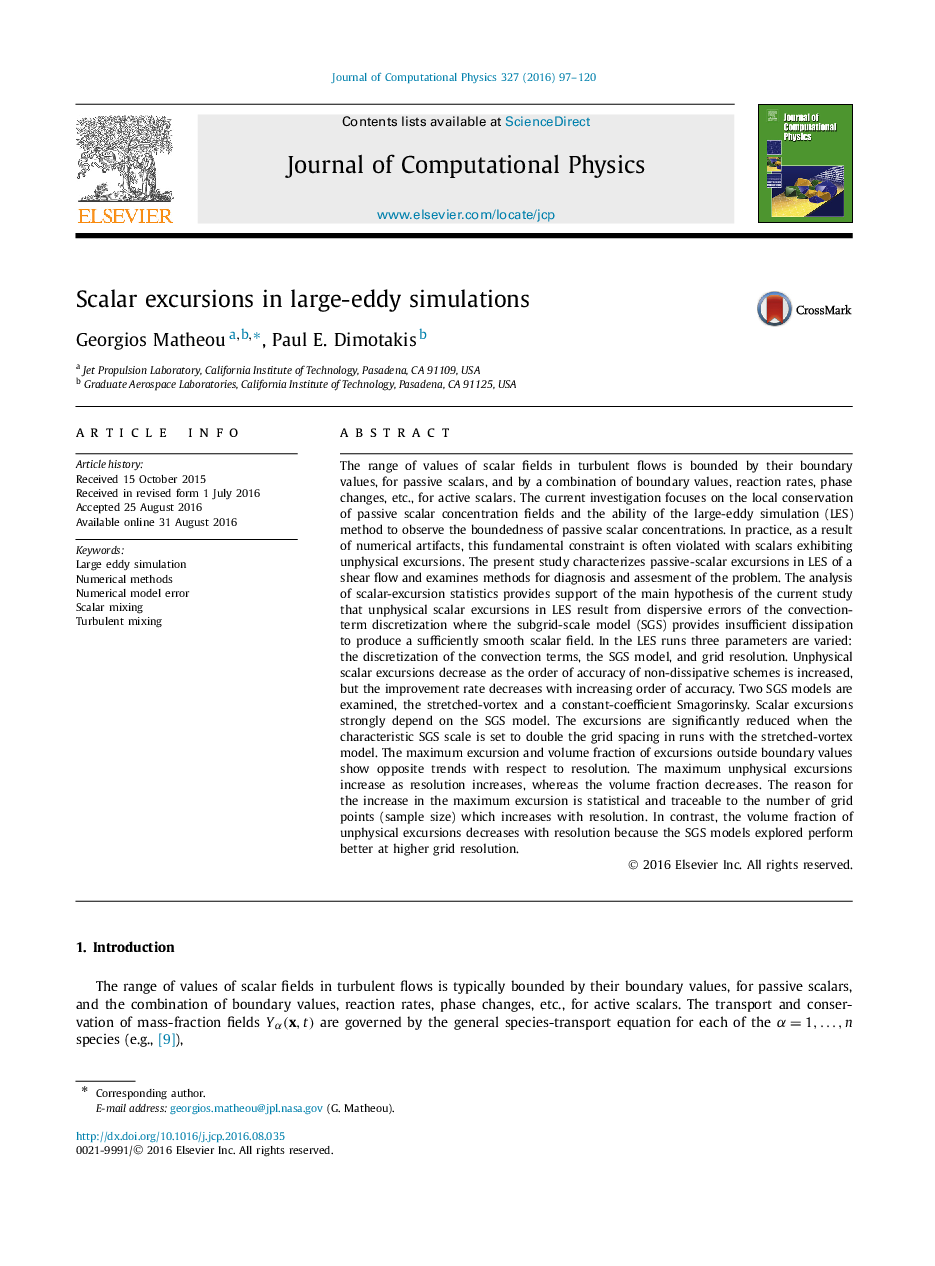| Article ID | Journal | Published Year | Pages | File Type |
|---|---|---|---|---|
| 4967947 | Journal of Computational Physics | 2016 | 24 Pages |
Abstract
The range of values of scalar fields in turbulent flows is bounded by their boundary values, for passive scalars, and by a combination of boundary values, reaction rates, phase changes, etc., for active scalars. The current investigation focuses on the local conservation of passive scalar concentration fields and the ability of the large-eddy simulation (LES) method to observe the boundedness of passive scalar concentrations. In practice, as a result of numerical artifacts, this fundamental constraint is often violated with scalars exhibiting unphysical excursions. The present study characterizes passive-scalar excursions in LES of a shear flow and examines methods for diagnosis and assesment of the problem. The analysis of scalar-excursion statistics provides support of the main hypothesis of the current study that unphysical scalar excursions in LES result from dispersive errors of the convection-term discretization where the subgrid-scale model (SGS) provides insufficient dissipation to produce a sufficiently smooth scalar field. In the LES runs three parameters are varied: the discretization of the convection terms, the SGS model, and grid resolution. Unphysical scalar excursions decrease as the order of accuracy of non-dissipative schemes is increased, but the improvement rate decreases with increasing order of accuracy. Two SGS models are examined, the stretched-vortex and a constant-coefficient Smagorinsky. Scalar excursions strongly depend on the SGS model. The excursions are significantly reduced when the characteristic SGS scale is set to double the grid spacing in runs with the stretched-vortex model. The maximum excursion and volume fraction of excursions outside boundary values show opposite trends with respect to resolution. The maximum unphysical excursions increase as resolution increases, whereas the volume fraction decreases. The reason for the increase in the maximum excursion is statistical and traceable to the number of grid points (sample size) which increases with resolution. In contrast, the volume fraction of unphysical excursions decreases with resolution because the SGS models explored perform better at higher grid resolution.
Related Topics
Physical Sciences and Engineering
Computer Science
Computer Science Applications
Authors
Georgios Matheou, Paul E. Dimotakis,
